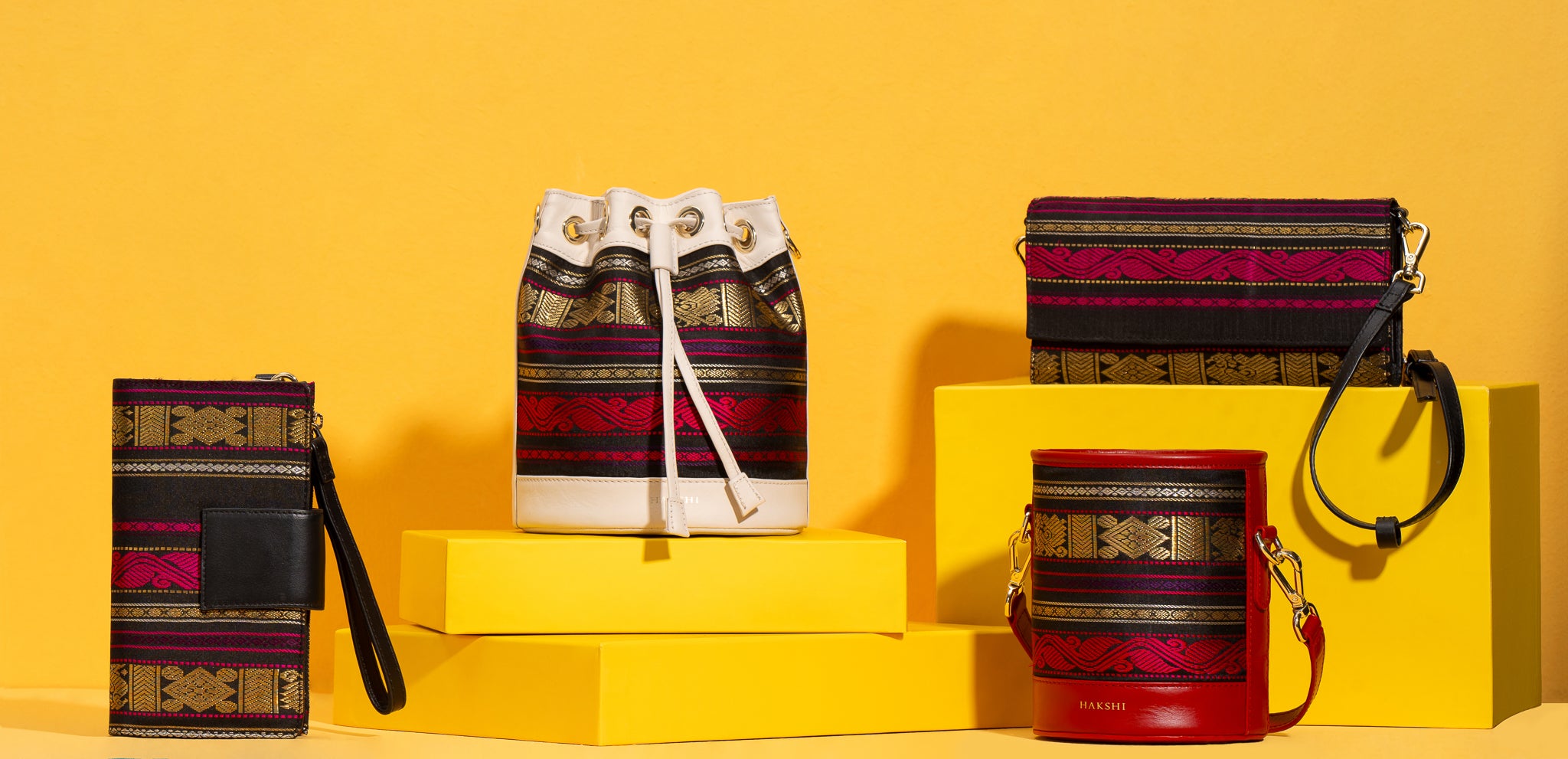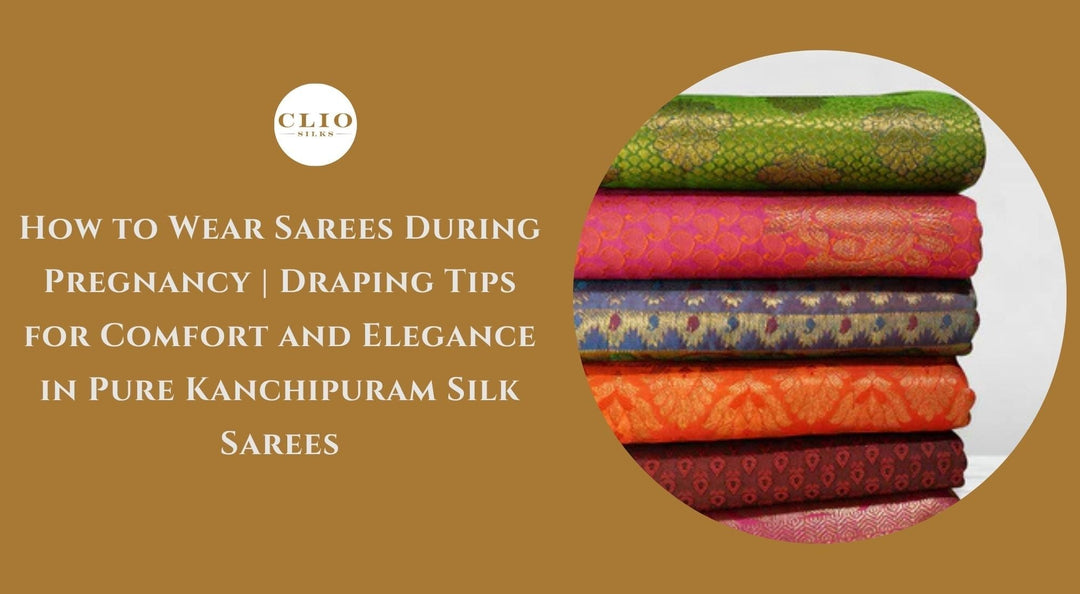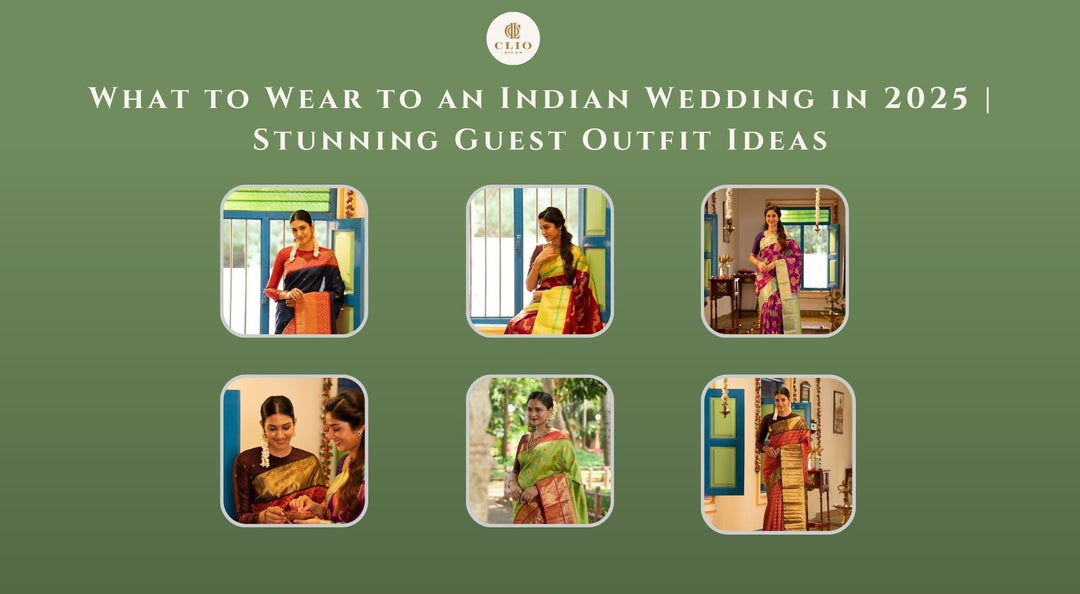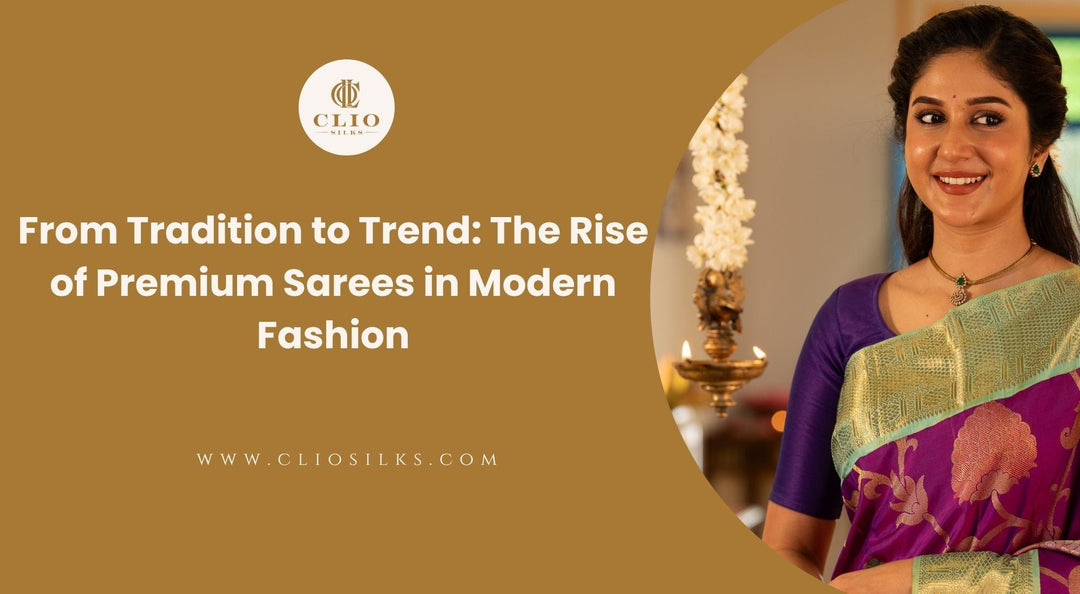Weaves of Wonder: Exploring the Rich Techniques Behind Kanjivaram Silk Sarees
Introduction: The Art Behind Every Drape
The Kanjivaram silk saree is not just an outfit — it’s a tradition, a celebration of craftsmanship, and a timeless legacy passed down through generations. Woven in the temple town of Kanchipuram, Tamil Nadu, these sarees are known for their bold colors, rich borders, and lustrous textures. But what truly sets them apart are the intricate weaving techniques that breathe life into every thread.
At Clio Silks, we believe each saree tells a story — one that begins at the loom, shaped by the hands of master weavers. Let’s take a deeper look into the signature weaving styles that make Kanjivaram sarees not just wearable art, but heritage you can drape.

1. Korvai – The Quintessential Contrast Border
Meaning: Korvai means “interlocking” in Tamil. This technique is used to attach contrasting borders to the body of the saree.
Technique:
It takes two expert weavers working together on a traditional pit loom to craft a Korvai saree. While one weaver works on the body, the other weaves the border, ensuring that the contrast in color and design aligns perfectly without any mechanical joining — it’s a marvel of human skill and synchronization.
Cultural Value:
Often seen in bridal and festive sarees, the Korvai weave is symbolic of duality and harmony — a representation of unity in contrast.
Clio Silks Signature Tip:
Opt for our Korvai Kanjivaram bridal collection with vibrant ruby-red bodies and parrot green zari borders for a dramatic and divine look.

2. Petni – Seamless Pallu Transitions
Meaning: Petni refers to a joining method used when the body and pallu (end piece) are of different colors.
Technique:
Petni involves re-setting the warp on the loom to seamlessly blend two different colors or patterns. The saree might have a vibrant pallu in zari gold while the body remains a subtle pastel — with the transition so flawless that it’s hard to tell where one ends and the other begins.
Why It’s Unique:
This technique allows weavers to play with color and design without compromising on the structural integrity of the saree.
Style Tip from Clio Silks:
Choose our dual-toned Petni sarees for evening receptions or sangeets. They’re elegant, modern, and deeply rooted in tradition.
3. Thazhampoo Rekku – The Sacred Temple Border
Meaning: Named after the “screw pine” flower (thazhampoo in Tamil), this border pattern resembles temple gopurams or floral spikes.
Technique:
A hallmark of Kanjivaram sarees, this border is woven using extra-weft techniques to create zig-zag or serrated motifs, often in rich gold zari.
Symbolism:
The Thazhampoo border is inspired by the temple architecture of South India and signifies spiritual elevation and divine energy.
Clio Silks Highlight:
Our Temple Collection features pure zari Thazhampoo Rekku weaves in earthy tones, ideal for rituals and traditional pujas.
4. Rettai Pettu – Double Delight Borders
Meaning: Rettai Pettu means "two stripes" in Tamil, referring to the two different designs on the upper and lower borders of the saree.
Technique:
This involves simultaneous weaving of two border patterns with distinct motifs and colors on the same saree, requiring immense technical precision to maintain symmetry and drape balance.
Why It’s Special:
It reflects the duality of South Indian aesthetics — grandeur and grace coexisting in a single weave.
Pro Styling Tip:
Pair a Rettai Pettu Clio saree with a bold contrast blouse for festive occasions and turn every head in the room.

5. Motif Weaving – Stories in Silk
What It Involves:
Traditional Kanjivaram sarees are often adorned with intricate motifs — peacocks, parrots, chakrams, lotuses, yali (mythical creatures), and more. These motifs aren’t printed — they’re woven directly into the fabric.
Weaving Technique:
Either handpicked or jacquard-weaved, motifs are created using additional threads, often in gold or silver zari, making each saree a tapestry of symbolic art.
What They Represent:
-
Peacocks: Beauty, grace, pride
-
Mangoes (paisley): Fertility and prosperity
-
Elephants: Royalty and strength
-
Yalis: Protection and mythological power
Clio Signature Line:
Our Mythical Muse Collection brings together these rich motifs with contemporary color palettes, making it perfect for those who love classic with a twist.

6. Kattam and Kuyil Kan – Geometric & Eye-Shaped Weaves
Kattam (Checks):
Kattam sarees are known for their symmetric checkered patterns — often large and bold — interwoven with zari or silk threads.
Kuyil Kan (Nightingale Eye):
This weave uses an eye-like motif often set against contrasting colors, creating a dramatic depth in design.
Fashion Insight:
These weaves are ideal for both traditional ceremonies and modern styling. Wear them with sleeveless or off-shoulder blouses for a chic, fusion look.

Clio Silks: Preserving the Legacy of Handloom Excellence
Every saree at Clio Silks is a tribute to the artisans of Kanchipuram. Our weaving partners come from generations of skilled craftsmen, and we ensure each piece is not only beautiful but ethically crafted and quality assured.
Whether you're a bride, a collector, or someone who loves cultural couture, there’s a weave that speaks to your soul in our collection.

Final Threads: What You Wear is a Story
Behind every Kanjivaram saree lies a legacy — of temples, tales, traditions, and techniques. Understanding the weaving process gives you a deeper appreciation for the artistry and emotion that each saree carries. At Clio Silks, we’re proud to preserve and present these timeless stories in silk.
Experience the artistry. Embrace the legacy. Explore our exclusive handwoven Kanjivaram sarees today.
Kanchipuram silks sarees | Pure Zari kanchipuram silk sarees | Brocade Kanjivaram silk sarees | Traditional kanchipuram silk sarees | Borderless Kanjivaram silk sarees | Classic kanjivaram silk sarees | Banaras silks | Soft silk sarees | Checked Kanjivaram silk sarees | Silk mark certified sarees | Ikat Sarees | Wedding Kanchipuram Silk Sarees | Soft silk sarees | Raw Silk Sarees | Gadwal Silk Sarees






Leave a comment